Many gardeners think about whether it is possible to grow a almond tree in our conditions. It turns out that it is quite possible. Almonds are famous not only to its decorativeness. Some of his varieties bring delicious useful fruits.
Content
Description of culture
Almond refers to the family of rustling, the nature of the plum and the ratio of almonds. This is a shrub or a tree from 1 m to 8 m in height. Few people know that almonds, which is often called nuts, is not. His fruit is considered a bone, albeit quite edible. Externally, the almond bone is similar to the apricot. The almond nut is successfully used in cooking, cosmetology and medicine. The almond tree (shrub) is considered to be a wounded honey, well pollinated and gives an excellent nature of nectar. How beautifully blooms almonds, you can see in the photo.
Types and grades of almond
Total almonds have more than 40 diverse species and varieties. There are also three varieties of culture:
- sweet;
- bitter;
- thin-walled.
The most popular species include several shrubs and trees, which are actively cultivated and grown:
- Almond ordinary is the most common appearance that is widely cultivated in the Crimea, in the Caucasus, Central and Malah Asia, Afghanistan and Iran. It is the most real long-liver - it grows about 130 years. This shrub is up to 4 m or wood up to 8 m in height. It has a lush openwork crown. Large white-pink flowers start their bloom in the last month of winter and flowing in 2-3 weeks. The leaves are narrow, pointed juicy green. The fruits have a surplus shape, covered with velvety skin, inside there is a bone with an edible nucleus. Almond ordinary has three varieties: bitter, sweet, brittle. Among the most popular varieties are distinguished by pink mist, aneu, white sail. This is almost the only form of almond, which is used in fruit growing.
- Almond steppe, low - grows in the European part of Rossi, Siberia, Central Asia, resistant to frost and drought. This is a low shrub of only 0.5-1.5 m in height, with a thick crown in the form of a bowl and fallen foliage. The small 6 cm sheets have two shades of green - below the lighter, the top is slightly darker. Small bright pink flowers up to 3 cm in diameter are not going to inflorescences, they begin their bloom in early May. At the same time, leaves bloom. After 2-3 weeks, the bushes are flowing. The life expectancy of the culture from 60 to 80 years. The fruits of almond steppe small, 2 cm long, covered with light velvety peel, ripen in late August - early September.
- Three-blade almonds - grows in North China. This tree is up to 5 m in height with an emission of a beautiful crown of 1.5 m in diameter and fallen foliage. It has dark gray shoots with yellowish leaflets at the top of the crown and gray on its lower part. Bright pink, dark pink and raspberry colors start their bloom in late April or in early May. After 2-3 weeks, the bush flows and fruits appear on it, which are very easy to sleep.
- Almonds Larbura - a small shrub tall up to 2 m, meets mainly in Altai. Crown consists of large dark green leaves and light-pink flowers reaching 4 cm in diameter. Very fragrant plant, starts fruit after 10 years of life. Flowers 2-3 weeks from the beginning of May. Easy tolerate frost.
- Almond Petunnikova - a dwarf shrub up to 1 m in height and a crown of no more than 80 cm. Its homeland is considered to be Western Tien Shan. Flowers in May beautiful pinkish flowers 12-14 days. It begins to be froning after 5 years of life with red fruits with velvety thick peel. In winter, shoots can be fed.
Growing almonds
Many beginner gardeners think about how to grow almonds so that he does not just adorganize the plot with its remarkable color, but also gave fruit. The cultivation of almonds is not very troublesome business, but has its own characteristics.
Reproduction of almonds
The reproduction of almond is possible in several ways:
- by vaccinating such fruit trees, like plum, Turn, Alycha and cherry, most often breed three-blade almonds. The view is not winter-hardening, but successfully harvested on winter-hardized bonds;
- almond seeds breed most often in specialized nurseries. Singing is carried out both in the spring and autumn. For the spring planting, the seeds are pretty predominate (moisturizing in the growth amplifier, circulation) is 3-4 months before sowing at air temperature of 2-5 ° C. Annual seedlings grow very quickly. When growth reaches 30 cm, the seedling can be planted at a permanent place. The transplant is most often passed painlessly and on the third year the bush begins to give color. The sooner you start trimming, the more chances will form a beautiful decorative crown;
- cuttings, mandrels and siblings are bred by almonds with a vegetative process of cultivation. To do this, in the 20th of June, they take offense and partially withdrawn cuttings, which are cut off with young shoots of this season. The length of the processes should be at least 15-20 cm. After trimming, the cuttings are necessarily processed by a growth stimulator. The cuttings are lowered into the solution and withstand 15-17 hours. After that, planted in drawers with a sandy-peat substrate (1: 1 ratio) for rooting. Boxes are put in a cold film greenhouse. After 20-25 days, the seedlings give good roots at 85% -100%.
Selection of place and soil
Almonds are not particularly picky in the choice of the soil and place of cultivation, but it grows better and fruits under certain conditions:
- Shrubs and almond trees successfully grow on rocky, gravelly soils, as well as light clay and even slate soils. Preferences The plant gives not loaded mechanically soil, fertile and soils with good drainage. It is not desirable to grow almonds on acidic and heavy soils. Along the almonds do not like strongly moistened soils, saline with the overabent chlorine. Too heavy slate soils that have poor air permeability are also not recommended for growing almonds.
- Almond loves a lot of light, it grows poorly on the shaded areas, its productivity and fertility drops sharply. Therefore, it is better to plant almonds on open light areas that are not shaded by buildings, high herbs and other trees.
Landing almonds
The best time to landing almonds is November. During this period, the seedling is better coming up, but in the spring it is less chance. One of the important conditions for growing almonds - it is necessary to plant at least 3-4 intercreable varieties, but not less than 2 shrub varieties. If you plan one tree, it will be nowhere to be polled. And even if the almonds are growing around the site, do not hope for pollination from their shrubs. To put almonds correctly, you need:
- Drop the pits with a depth of 60-70 cm and 50-80 cm wide at a distance of 2-3 m one from another. For dwarf trees, the distance may be less. If you plan to plant a whole almond garden, then consider that the distance between the rows should be at least 7 m.
- Be sure to put on the bottom drainage - rubbank, broken brick or stones. Fill the drainage with sand with sand 7-10 cm.
- An organic and mineral fertilizer is introduced into each yam. The best option is a pumping and superphosphate in a ratio of 10: 1.
- Saplings are lowered into the hole so that the root neck is deepened by 10-15 cm in the ground. After that, the moon falls asleep the earth and tamper.
- Mix the soil peat under each seedling in diameter 3 m.
- Under each seedling after landing, water bucket is poured.
- While the seedlings are not strengthened, they must be tied to a wooden or metal support.
Care ha almonds
It cannot be said that almonds are a very demanding plant, but a certain care for it is still needed:
- Watering the plant is needed as the soil drying. When the earth dries, it is necessary to pour out 10-12 liters of water under the barrel, but no more, so as not to spoil the root system. From the overabundance of moisture, she can rot. In the arid season, more irregularities may be required, and in the rainy summer, additional moisture may not need.
- So that shrubs and trees are actively blooming and well fruited, they must be sure to feed fertilizers. In the spring period, this is done by manure or chicken litter, and in the fall, after the foliage falls, you can easily feather the soil with superphosphates.
- Almond needs regular trimming of old, dried and sick shoots. It is necessary to do it in early spring, even before flowering. Decorative shrubs requires cosmetic trimming, with which the beautiful crown is formed. She is held after shrubs are swinging.
- Since almonds flowering plant, it is very like to attack various pests and diseases. With them, you must keep a preventive struggle:
- the most dangerous pest is the word. If it is not to neutralize it in time, the tree can remain without leaves, and this will affect the further development of the kidneys, then the flowers and as a result can not be waiting for fruits. Special pesticides are used in the fight against tool. Small plants can be sprayed with a solution of household soap, punching of wormwood and red bitter pepper;
- to a dangerous disease that almonds may be subject to gray rot. Funds that could protect the plant from gray rot, do not exist. Save the shrub can only cut the sick branches;
- in the disease of almonds, moniliosis must be sprayed with a burgundy liquid;
- with a caterpillar that can attack your almonds and destroy the whole foliage, you need to fight a solution of insecticidal soap or special oils.
- Periodically, it is necessary to loosen the land under the shrubs and trees, as well as to free them from weeds, so that moisture, fertilizers and oxygen do in the soil.
- After loosening the soil, you can feed the trees. Do it annually after harvesting with superphosphate fertilizers. During the flowering and fruiting period, feeding with manure or bird litter is allowed.
- To protect almonds from frosts, you can postpone ends of shoots - remove extreme kidneys. This contributes to the rapid weighing of shoots and in this case they easily carry frosts. The procedure is carried out at the end of August, after harvesting. Almonds that you multiply with vaccination, it is better to cover with a film or tight fabric for the winter and tidy.
Almond Earthman
In nature, there is also an earth almond, whose cultivation differs from the usual. This is a herbaceous plant from the family family. It is often called Chuf. According to the taste qualities of the Chuf, there is little different from the almond usual. Earth almond grows well on loose nutritious and not too wet soils. This is a thermal-loving plant that does not evenly carry even small frosts.
Reproduction of earth almonds
Earth almonds reproduced mainly by tubers:
- Separate tubers in the spring when the threat of spring frosts and the air will warm up to + 10-15 ° C. And even better to transfer the process to the beginning of the middle of May, when the weather is steady warm.
- Before falling down the tuber of cultures, it is necessary to soak in water room temperature. If it is possible to do it in melt water - excellent.
- The tubers are planted into the holes of 30 cm deep at a distance of 20 cm one from the other, and the distance of the rifle should be at least 30-40 cm.
Caring for Earth Almond
Chuf is absolutely not a pick-up plant. Caring for it is as follows:
- during the dry season, regular watering is required;
- the whole vegetative period can be picked up almonds with humid and wood ash;
- if necessary, the soil should be loosened and spoiled from weed grass.
Harvesting
As soon as the above-ground part of the plant pleases and starts to dying, it's time to collect a crop:
- First of all, you need to mock the grass, then the tubers dug up and shake. The process is similar to digging potatoes.
- After that, the tubers are sorted and cleaned, then dried outdoors.
Earth almonds are not only edible, but also decorative. They can be decorated with lawns, planting around the perimeter as a fence.
Now, when you learned all the subtleties to grow and care for almonds, you can safely take the case. If you are patient and do not regret the time, after a while you will bloom all your red and fruit of the almond garden.
How to cut almonds, you can look at the video.

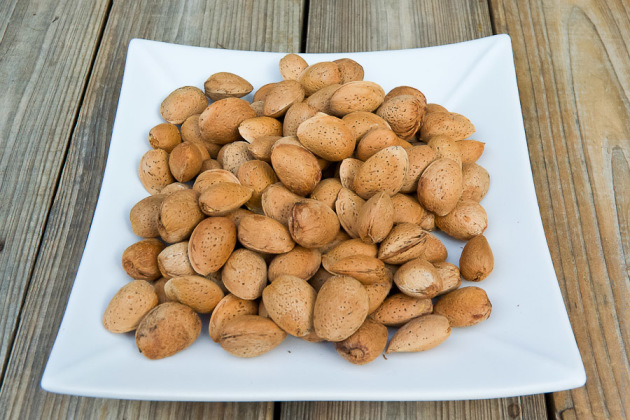
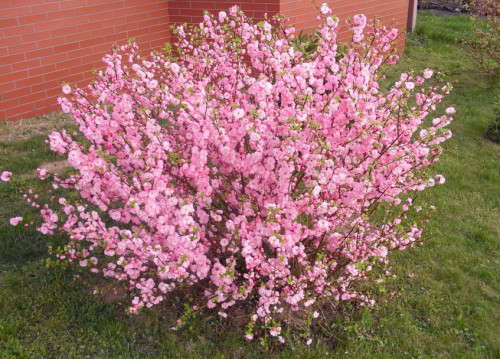
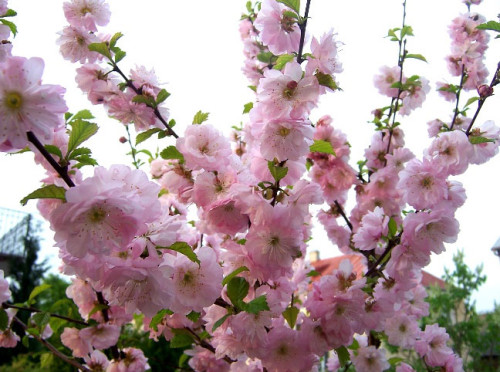
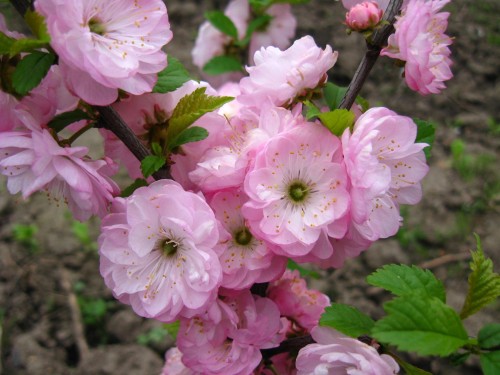
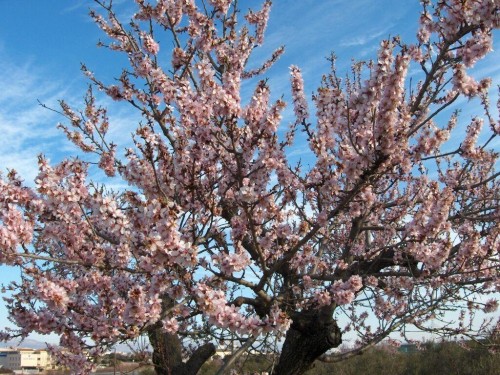
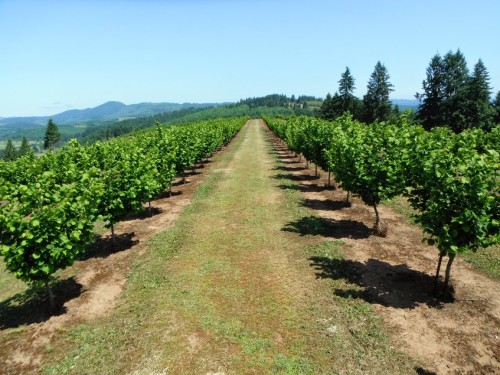
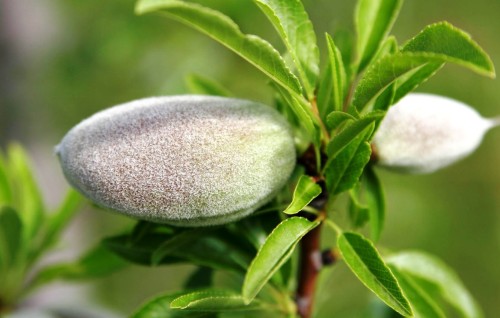
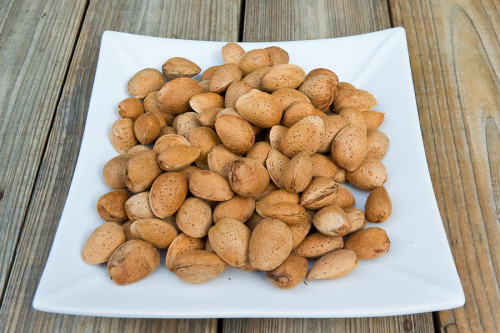
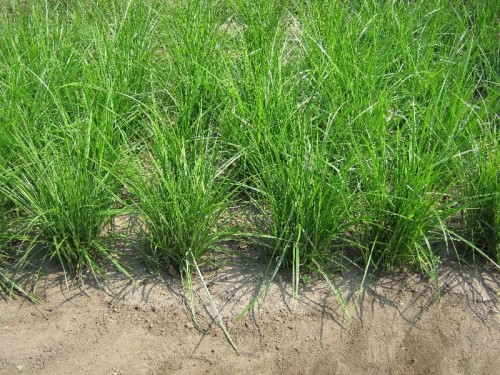
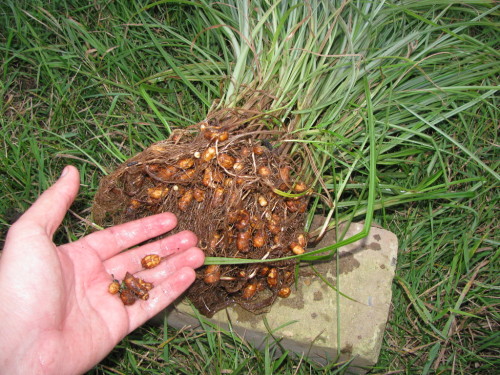












 Start a discussion ...
Start a discussion ...